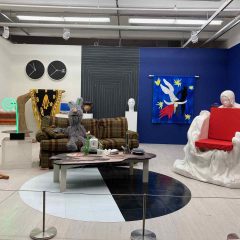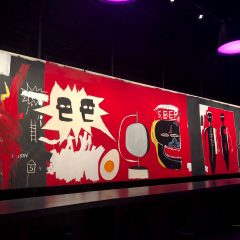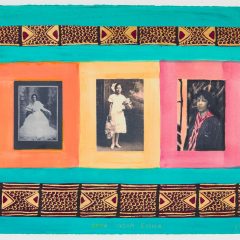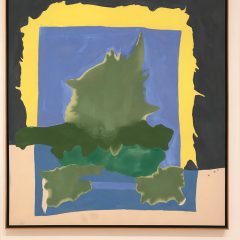Brooklyn was too hot for galleries Wednesday. Only one elevator was operating where my son works in DUMBO; the others were shut down for brown-out prevention, under orders of Con-Ed. Given the extreme heat, Andy Warhol: The Last Decade at the Brooklyn Museum seemed like a good bet.
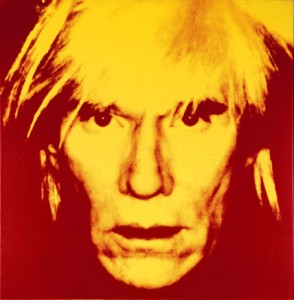
The Brooklyn Museum also was hit by the need to conserve energy. Some of their galleries were closed, but the special exhibitions were all up and running–including a terrific exhibit of women’s dresses that proved to be full of ideas about bodies, aesthetics and the times in which they were made. Also up and running was a jam-packed exhibit by Kiki Smith.
In contrast to the bursting-at-the-seams Smith exhibit, the Andy exhibit takes up galleries on two floors, but with too little art and artifacts (photos of folks, video clips, copies of Interview Magazine) for too much space.The museum could have conserved a bit more energy by packing the Andys into two-thirds of the space and shutting down the extra galleries.
Not that I wasn’t thrilled by time I was done. I was.
What thrilled me were the late self-portraits in which he’s Pagliacci, playing the mournful clown. These works are chilling and ominous. In them, Andy includes skulls, or makes himself disappear practically, with mainly the spikes of his wig emerging from the penumbral canvases.
And then he really did disappear. He died in 1987!
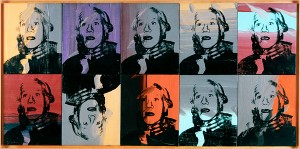
Which brings me to the other really wonderful stuff in this show–a video of the star-studded eulogies from his funeral. Andy would have been thrilled by the parade of celebrities, the stories, the admiration and affection, as well as the somber religiosity.
In contrast much of the remainder of the show seems like a shallow shadow of his more youthful work. Silk-screened Marilyns are just repeats. The bombastic Rorschachs and Shadows, the exuberant but uneven mid-life-crisis Basquiat/Clemente collaborations and the bad-boy urine paintings seem more experimental than thought through.
On the other hand, the camouflage paintings, with their decorative motifs and unlikely color choices have some gravitas–fashion meets war and death and invisibility–invisible like the Andys in the self-portraits.
The Last Supper, Andy’s largest work ever, comes up short on visual pleasure; its translation of the Da Vinci painting into Warhol’s own Benday dotty factory reproduction is ambivalent–religious as much as irreverent. The Detail of the Last Supper (Christ 112 Times) captures with some sincerity the idea of Christ as a celebrity or a product.
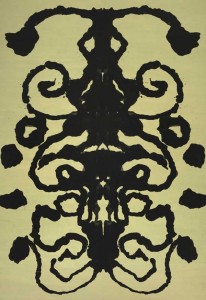
A lengthy Andy-produced video of an interview between Henry Geldzahler and Diane Vreeland fills a huge wall, top to bottom, dominating an entire gallery room. Geldzahler dithers incoherently while Vreeland, delivers statements and speaks about herself, herself, herself. But the Enormous Scale of it seems like curatorial inflation. Honestly, Warhol was not showing these people as giants.
The best of the show is in the fifth-floor galleries. I’d go back again for the self-portraits and a series of black-and-white paintings based on Pop commercial images. They drip with wit. I’d also go back for the funeral orations. In one eulogy (I think it was by a priest) the artist is quoted as saying, “I’d like to disappear.”
(Look for Roberta’s upcoming post about a documentary film, Andy Warhol).
The exhibit is up to Sept. 12, 2010 in Brooklyn. It is traveling to it’s final stop, the Baltimore Museum of Art, Oct. 17, 2010 to Jan. 9, 2011. The show was organized by the Milwaukee Museum of Art and stopped in Fort Worth, too.


